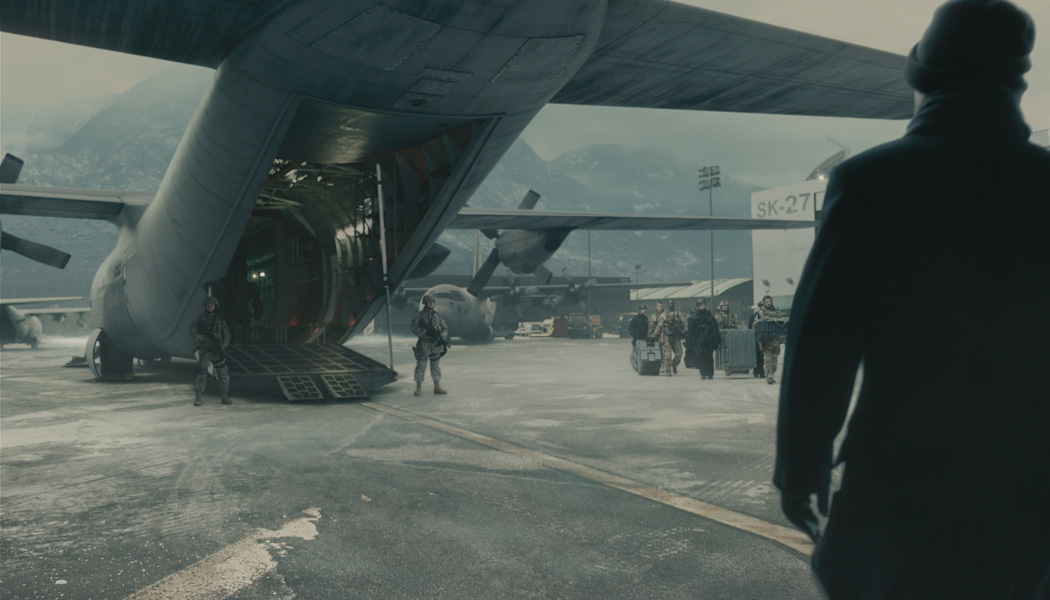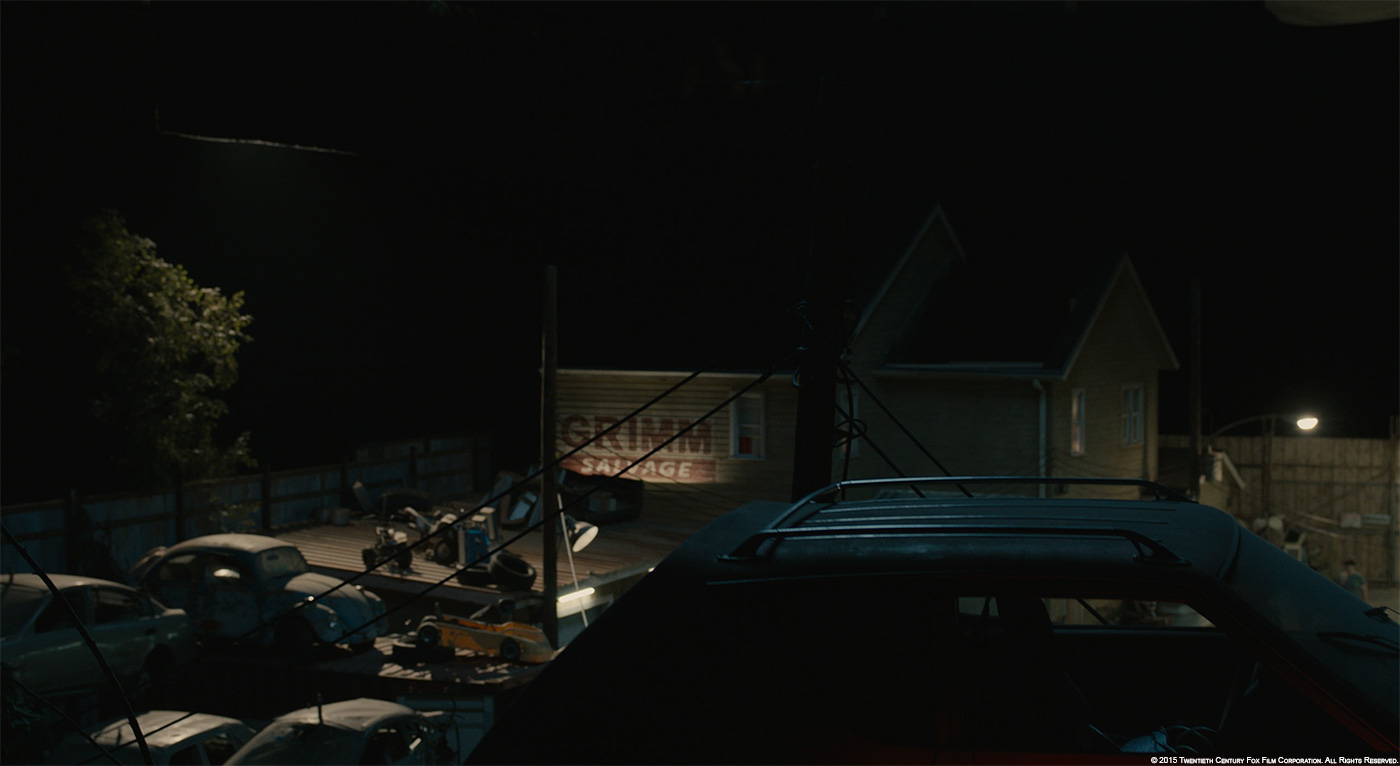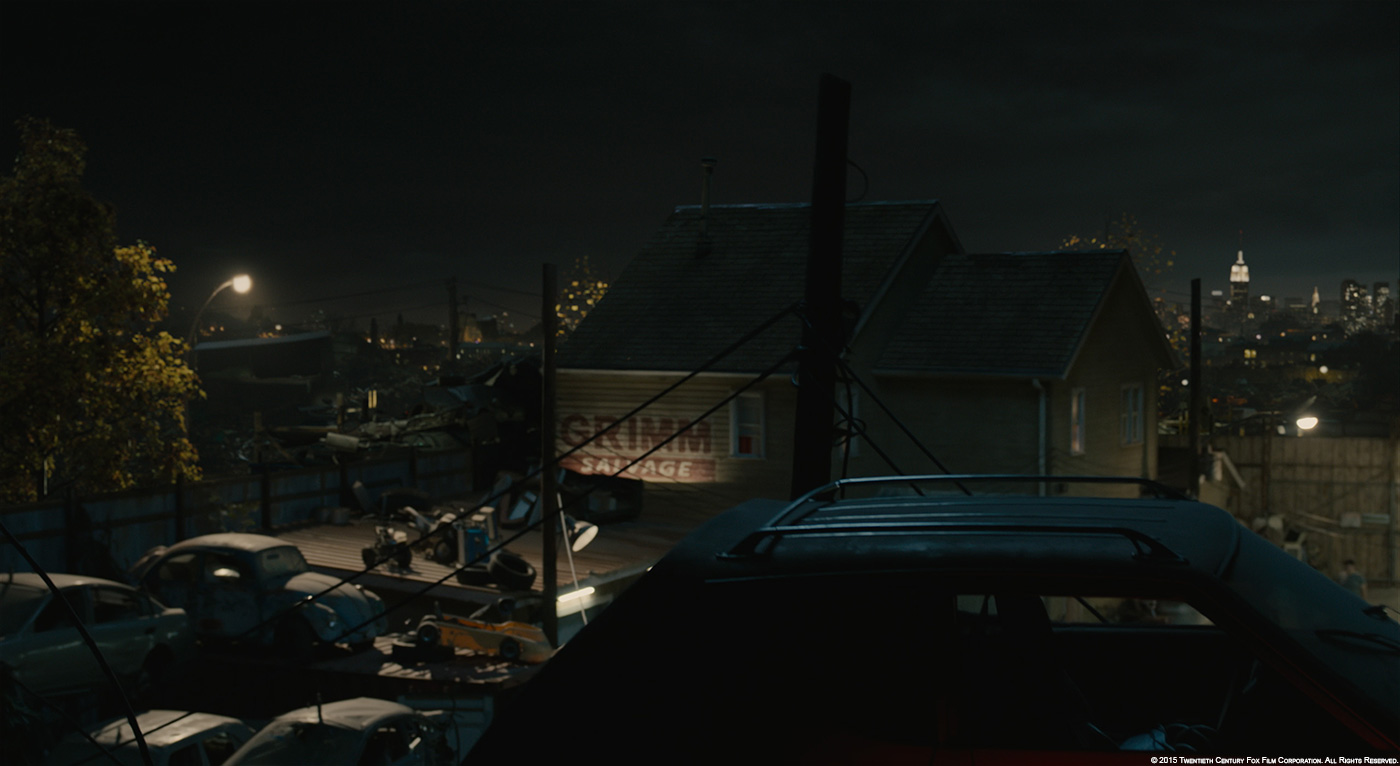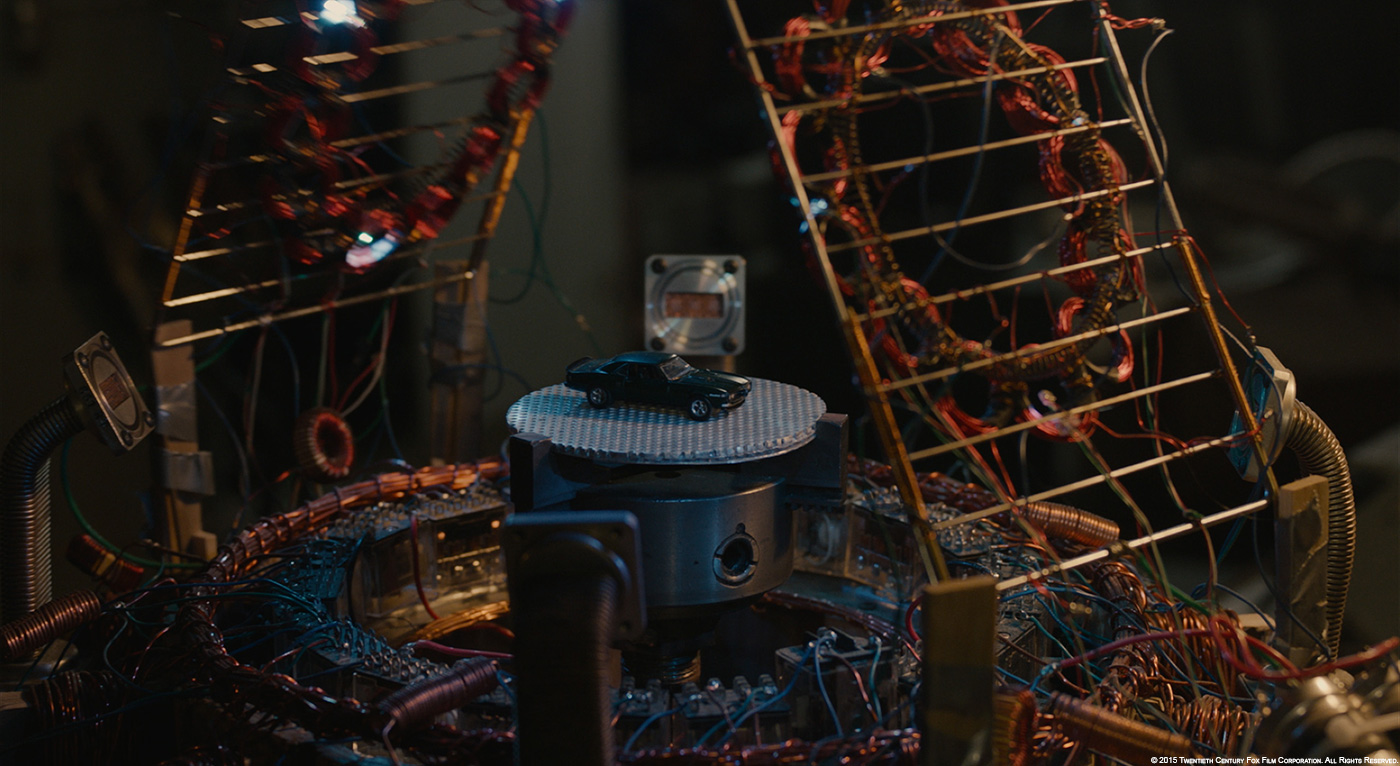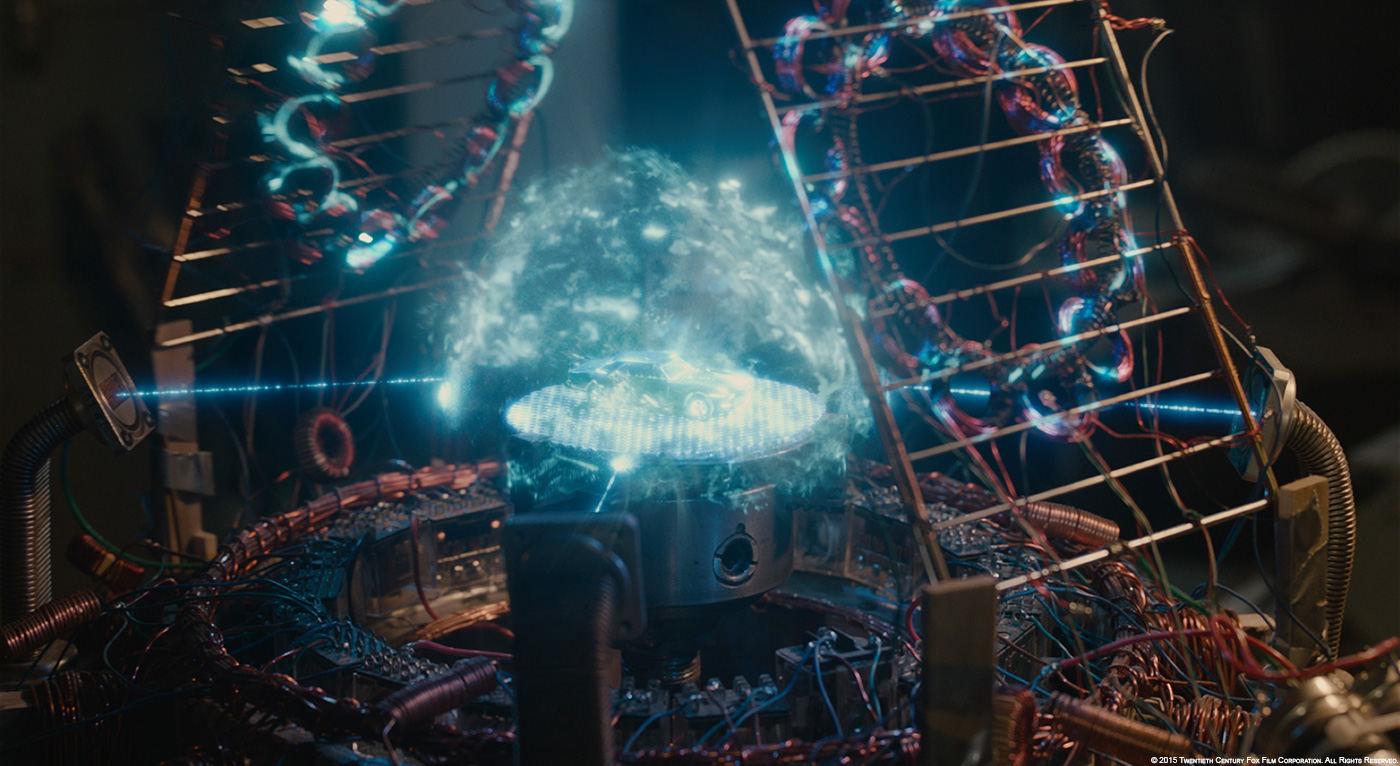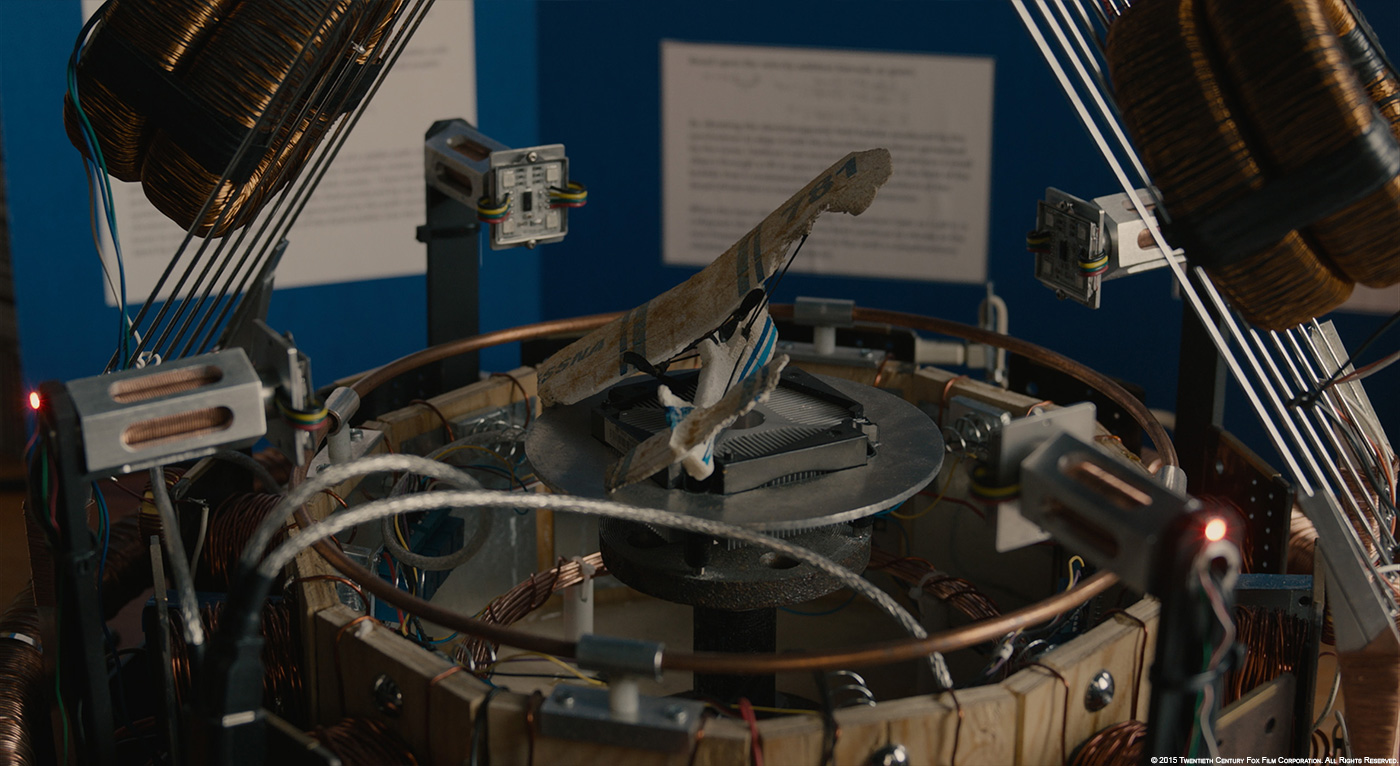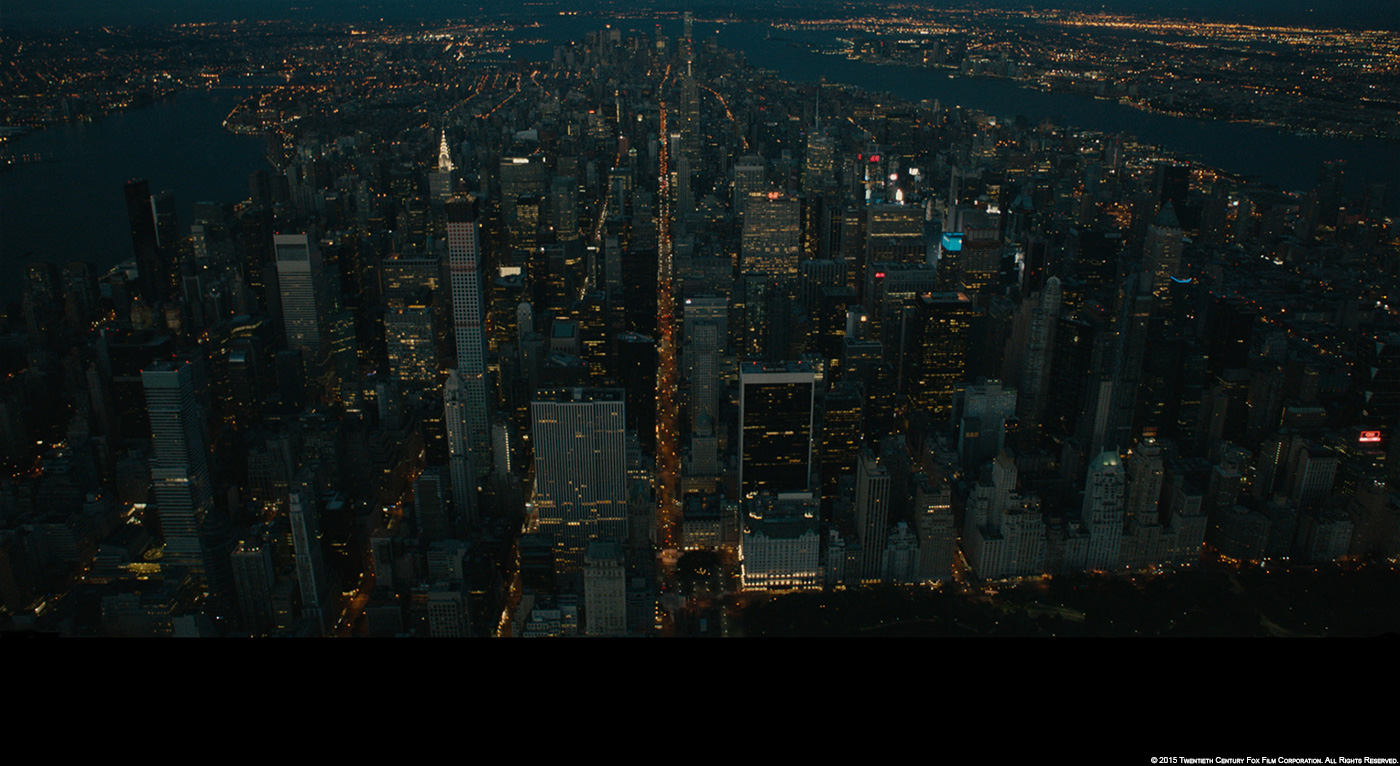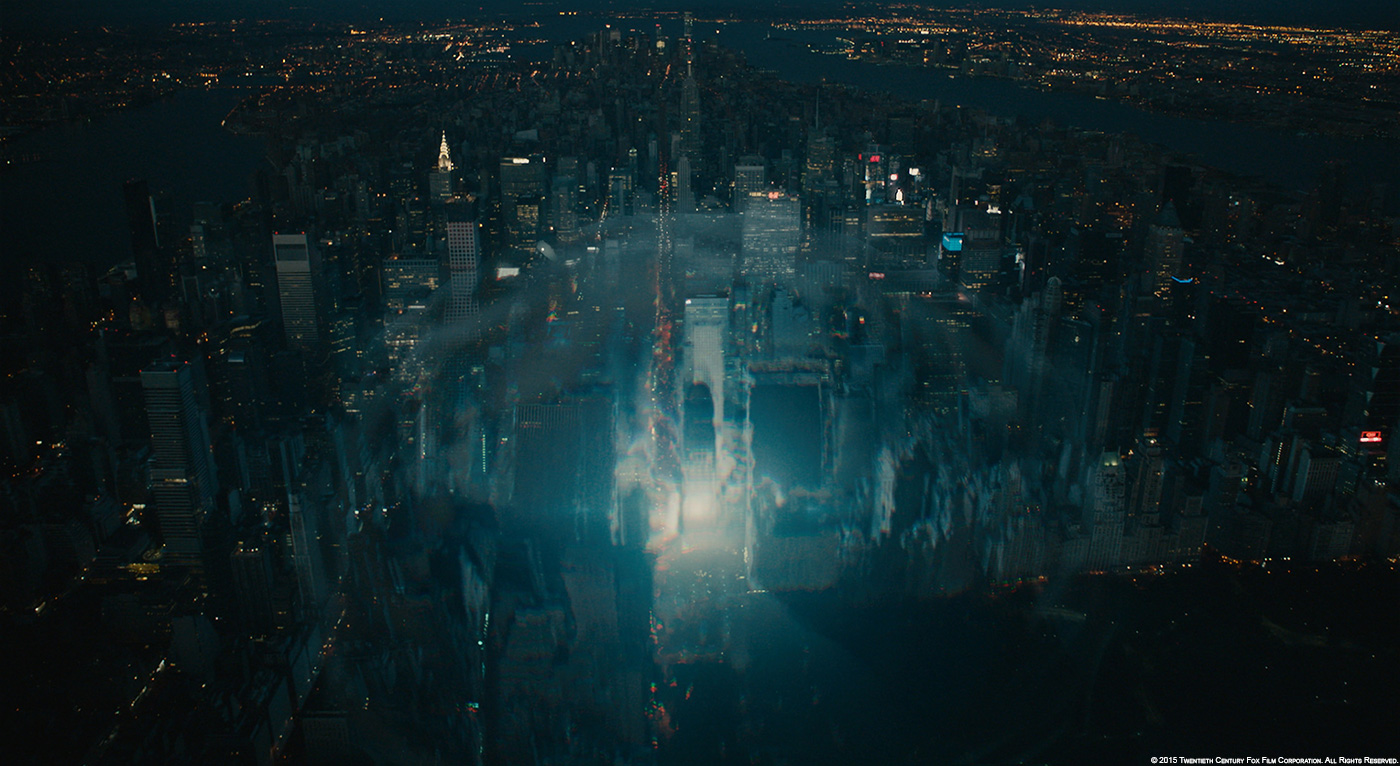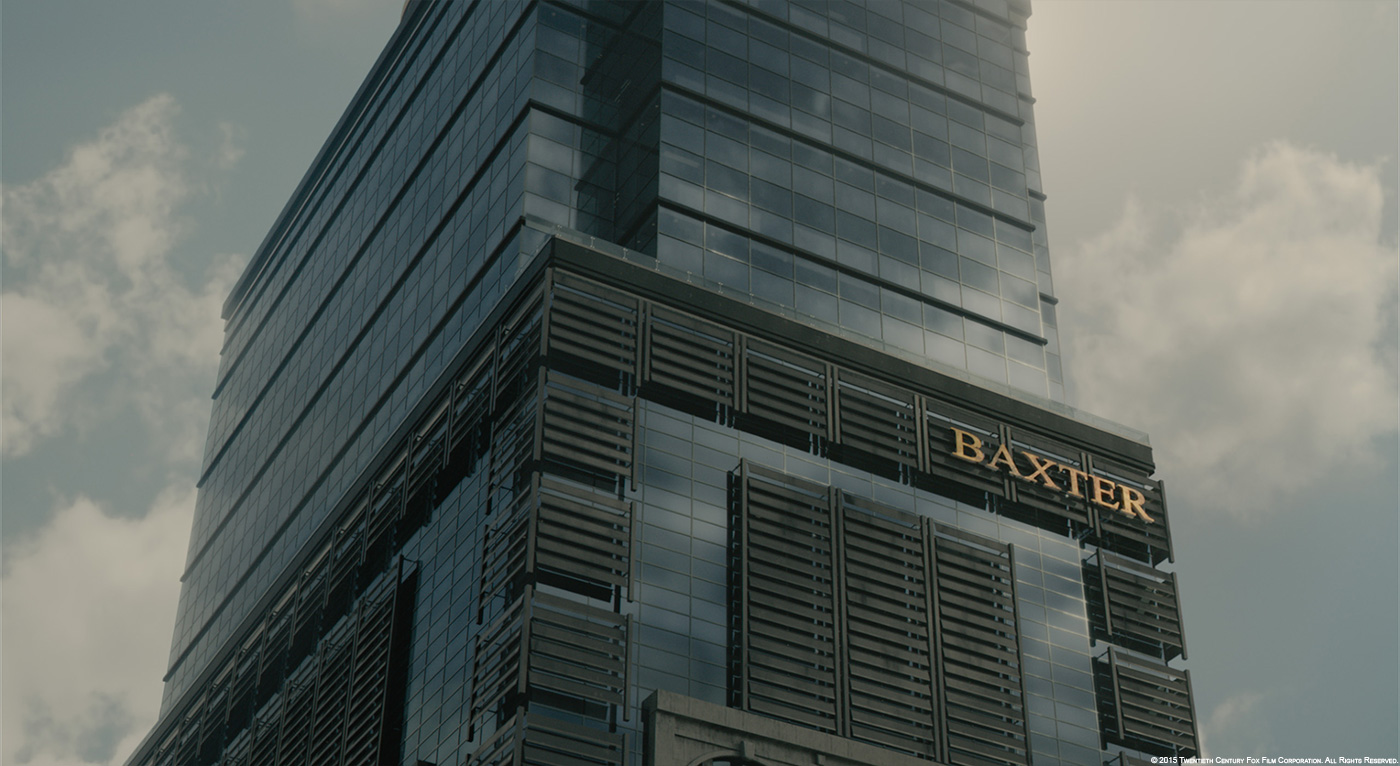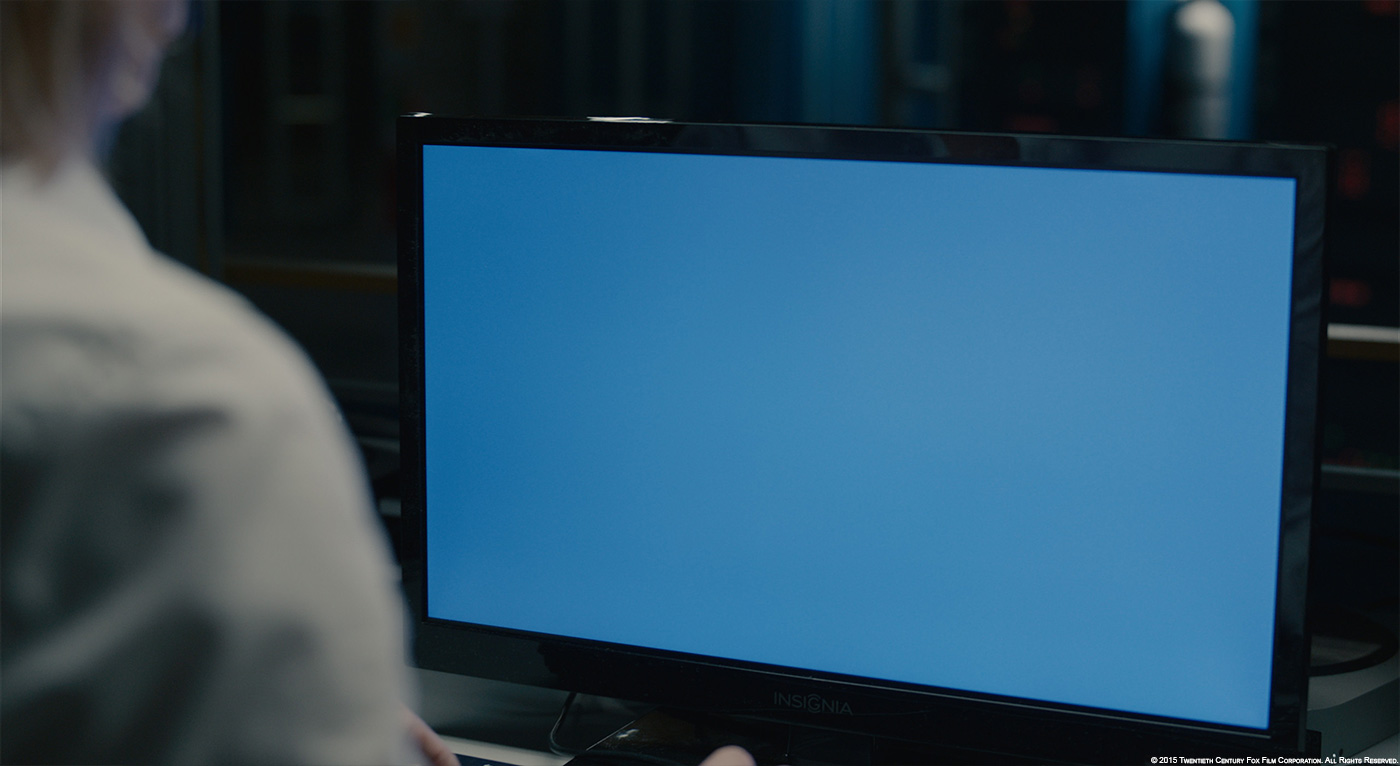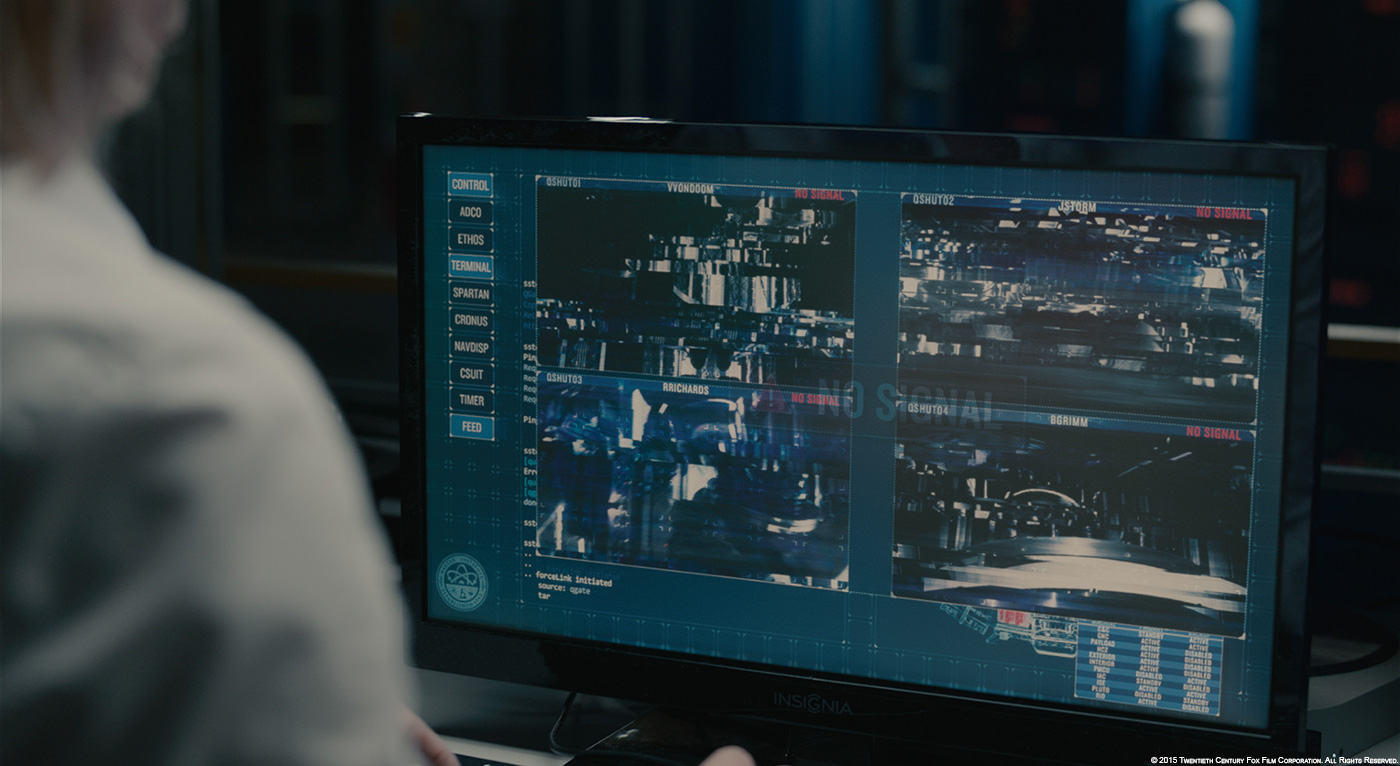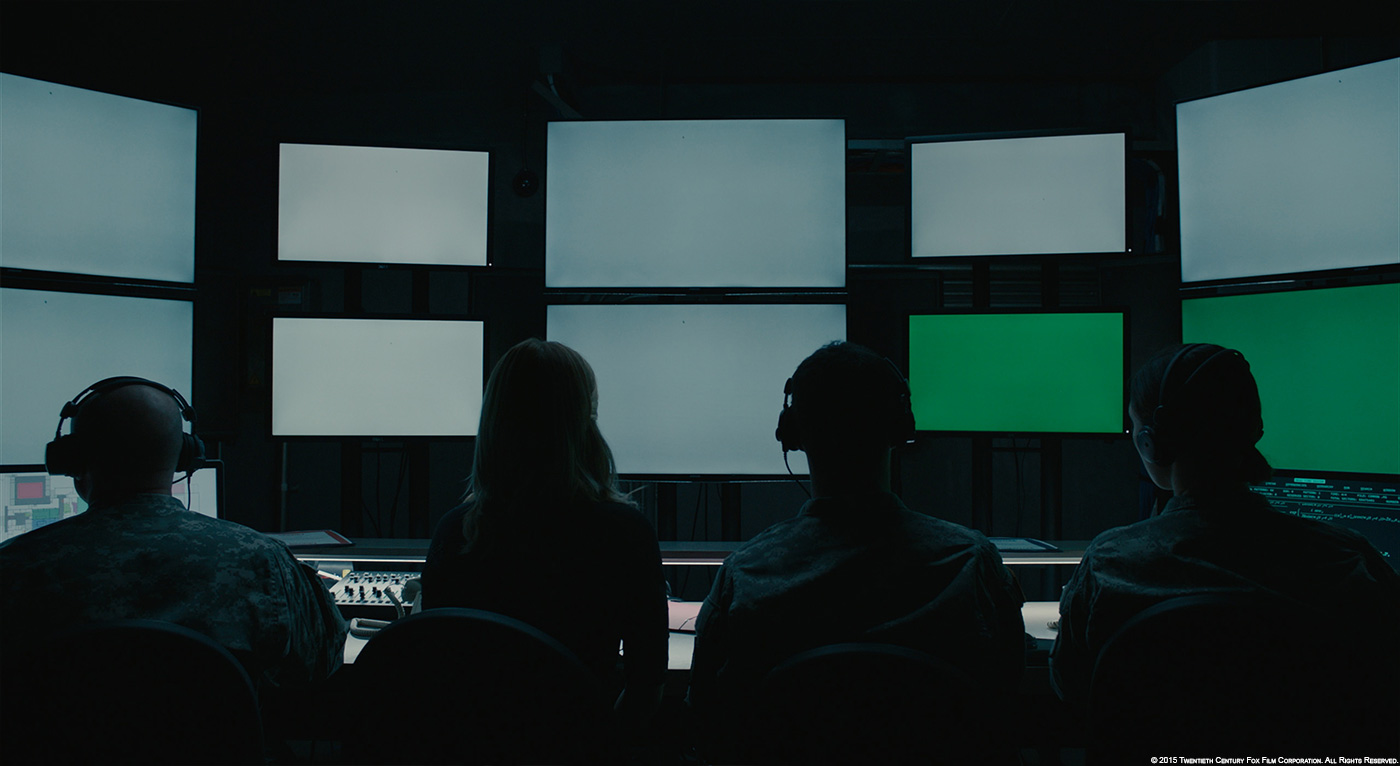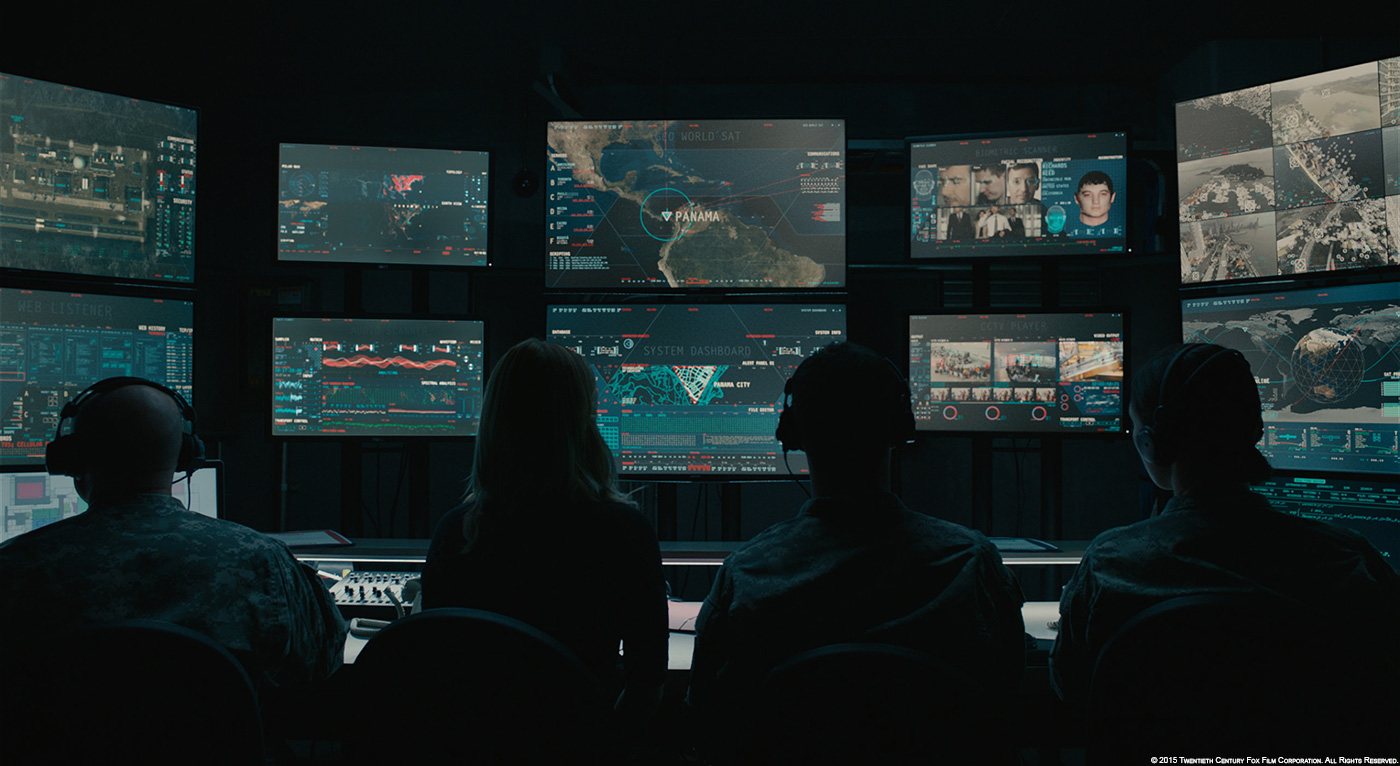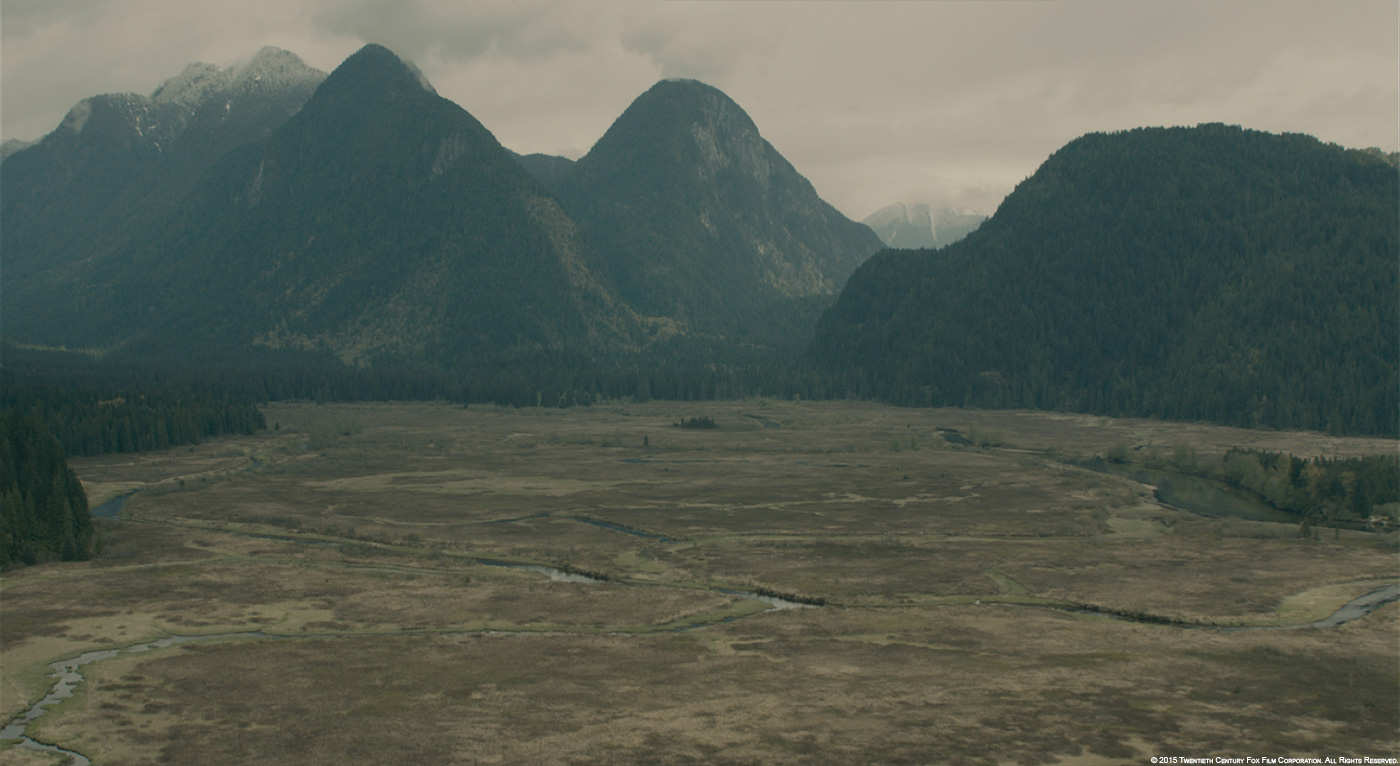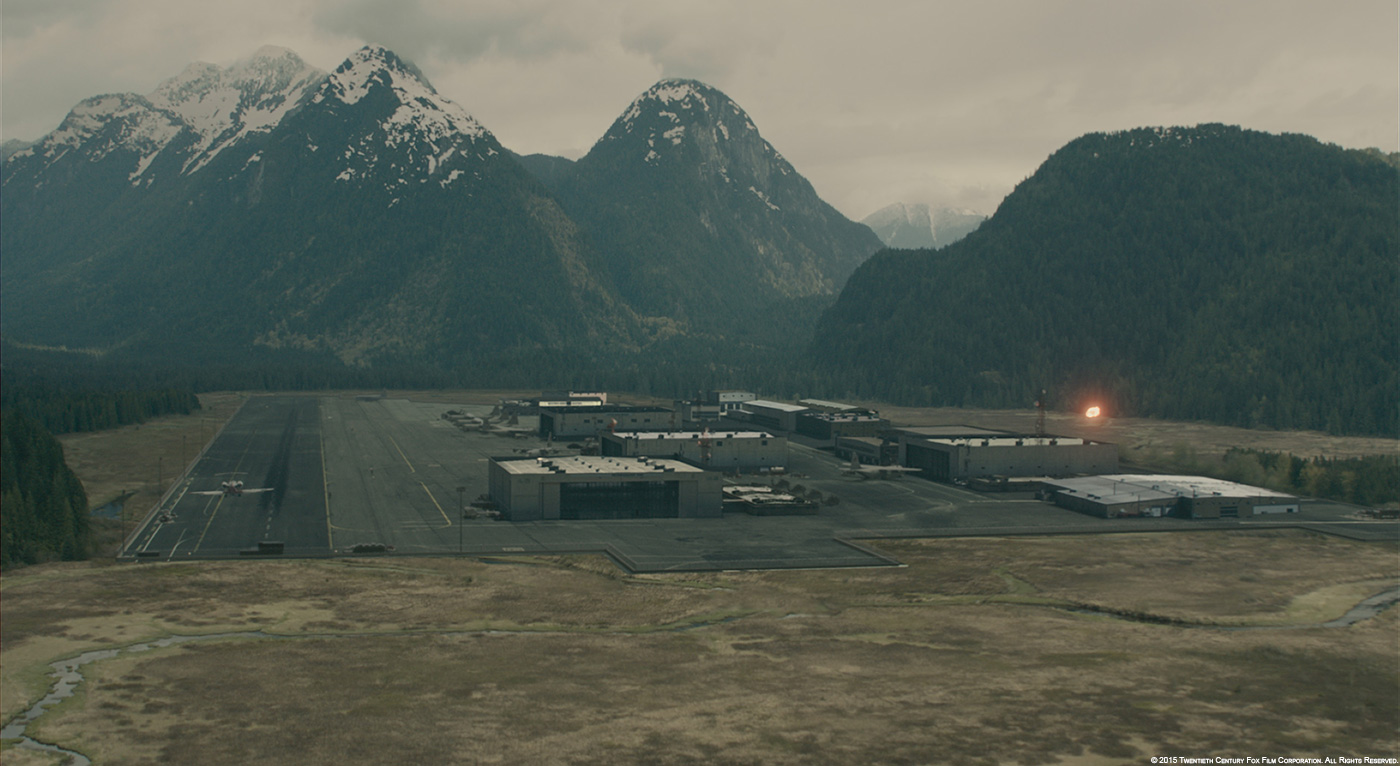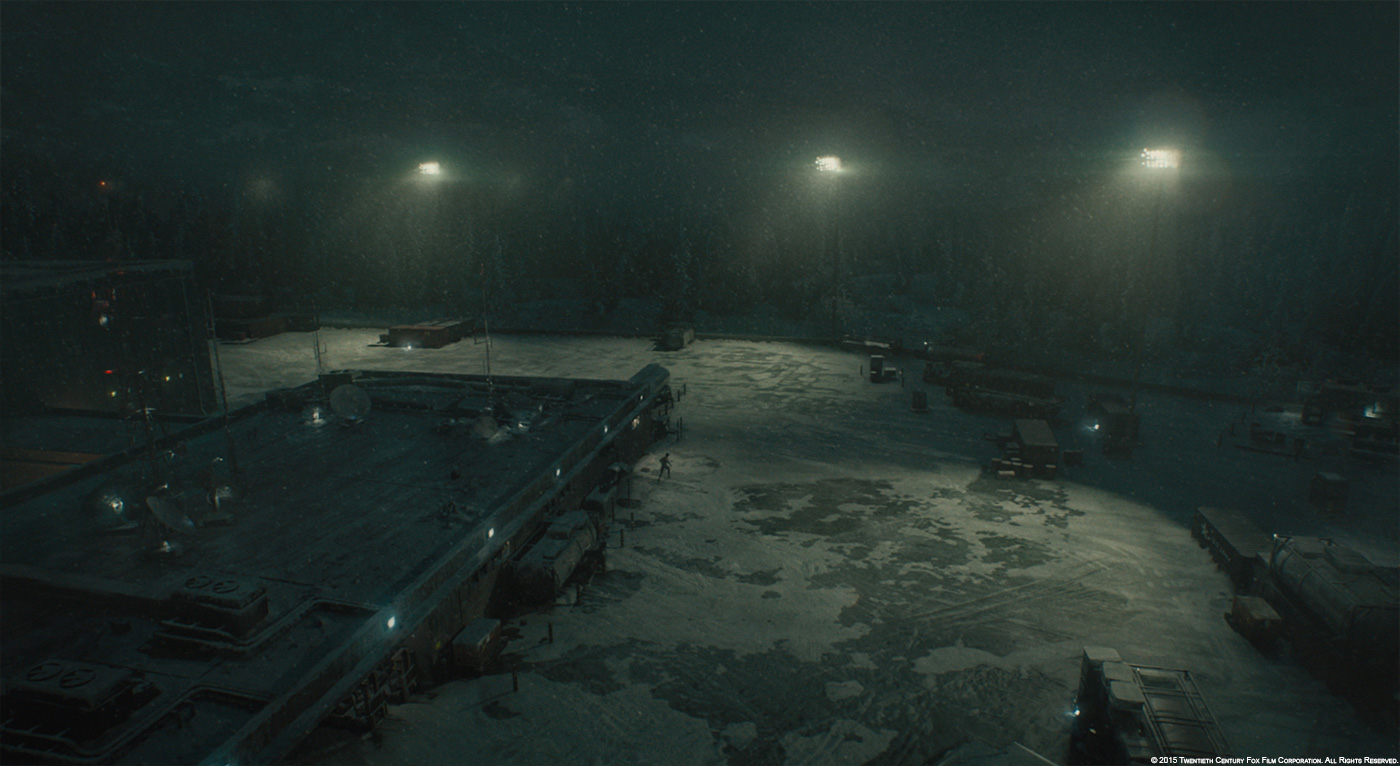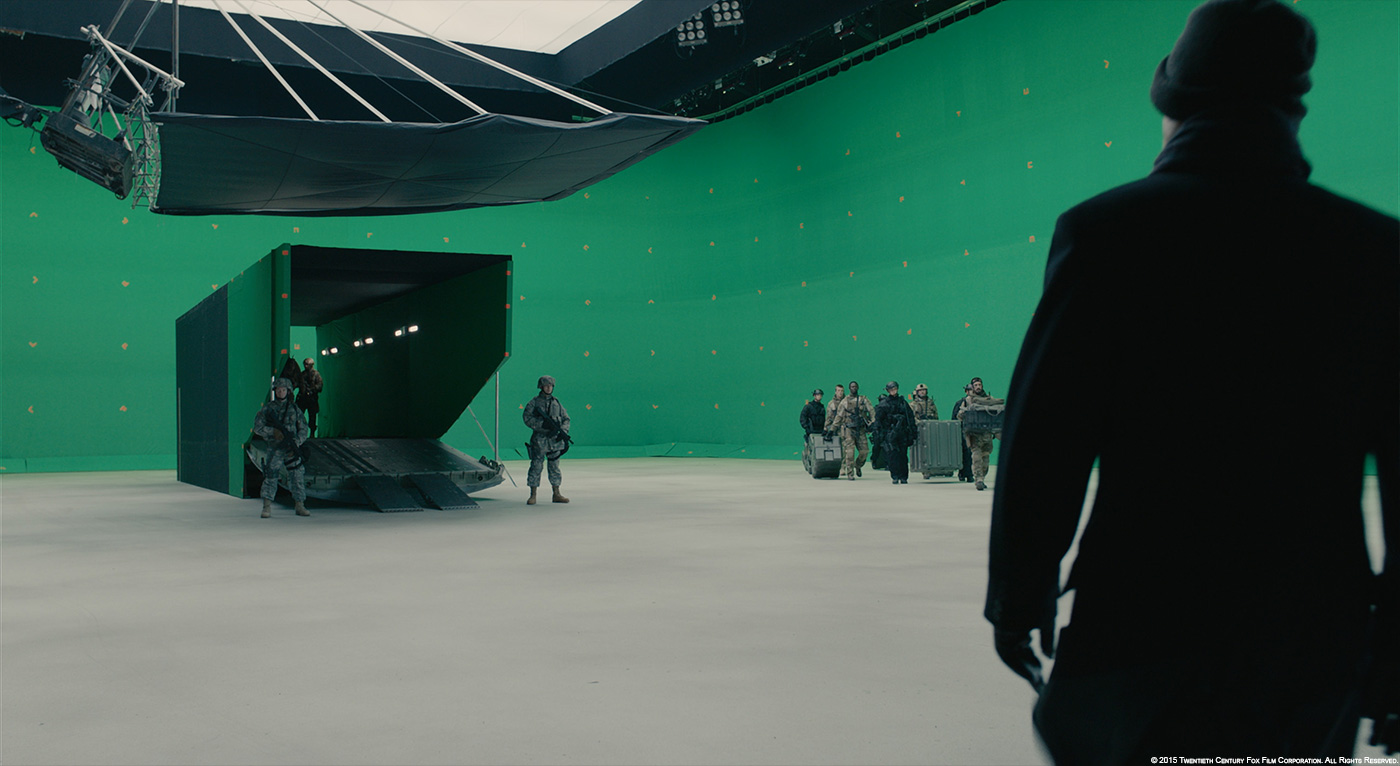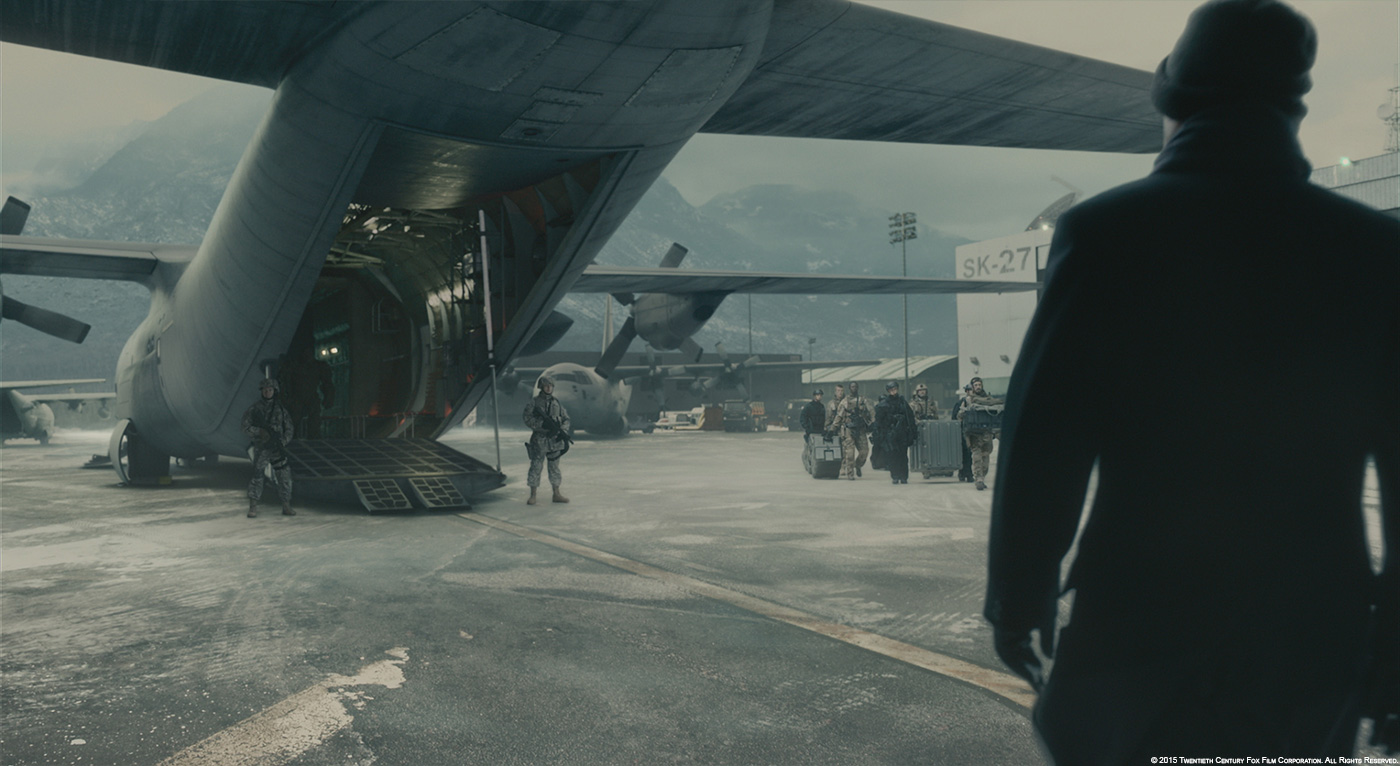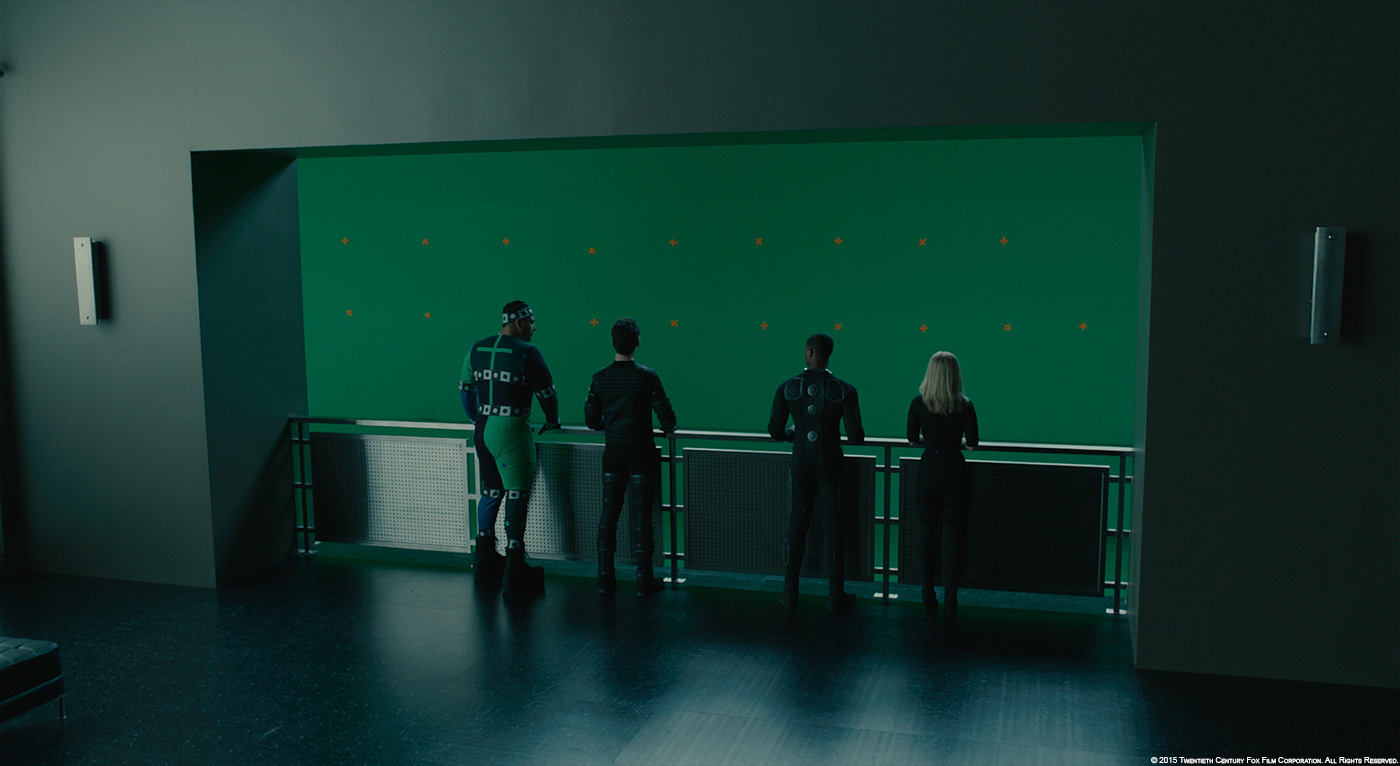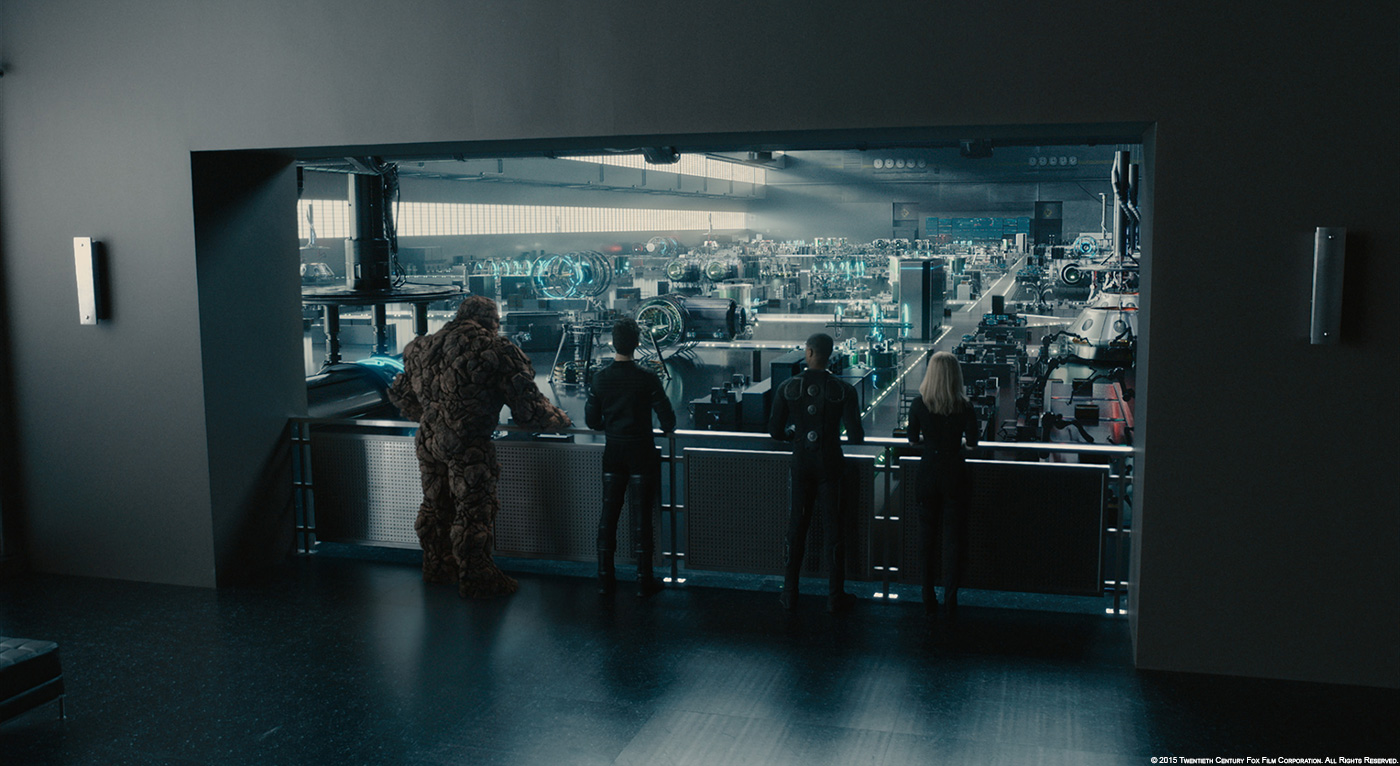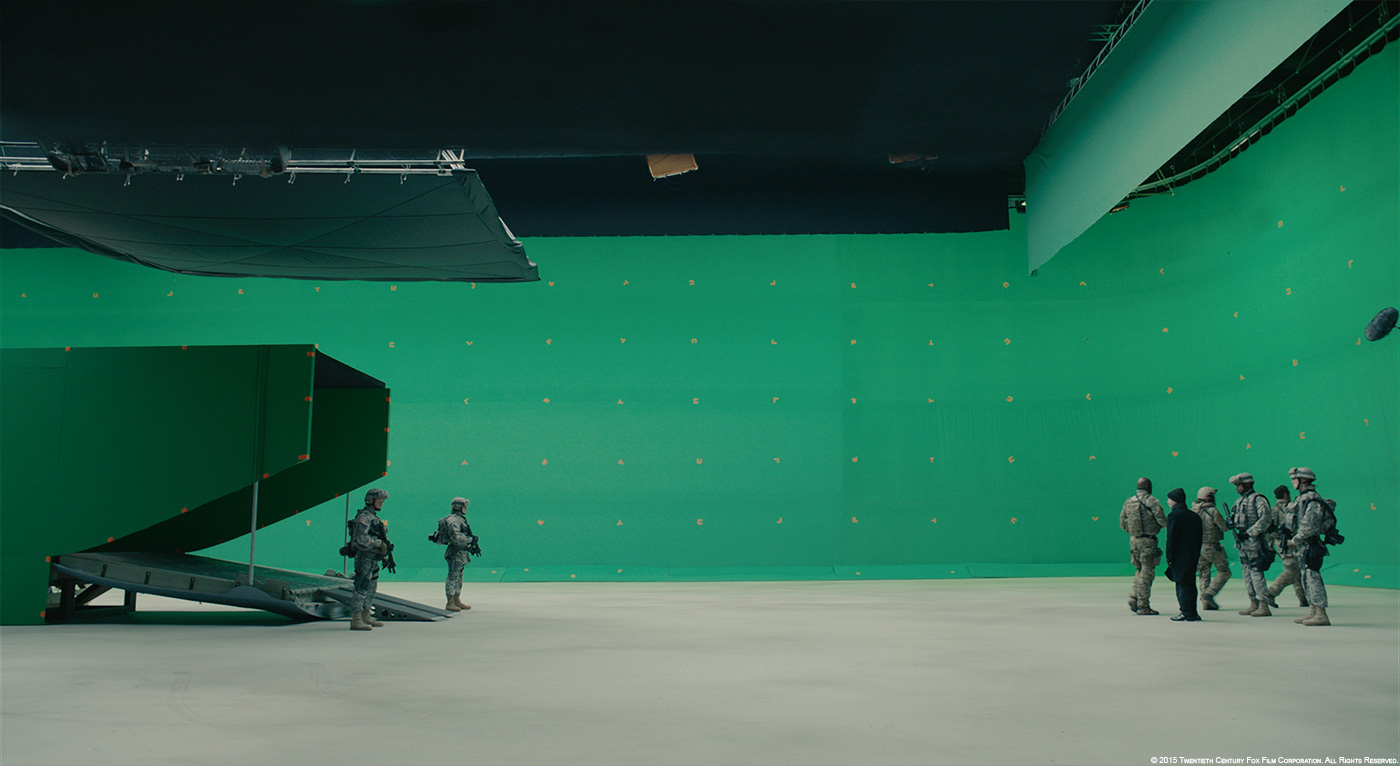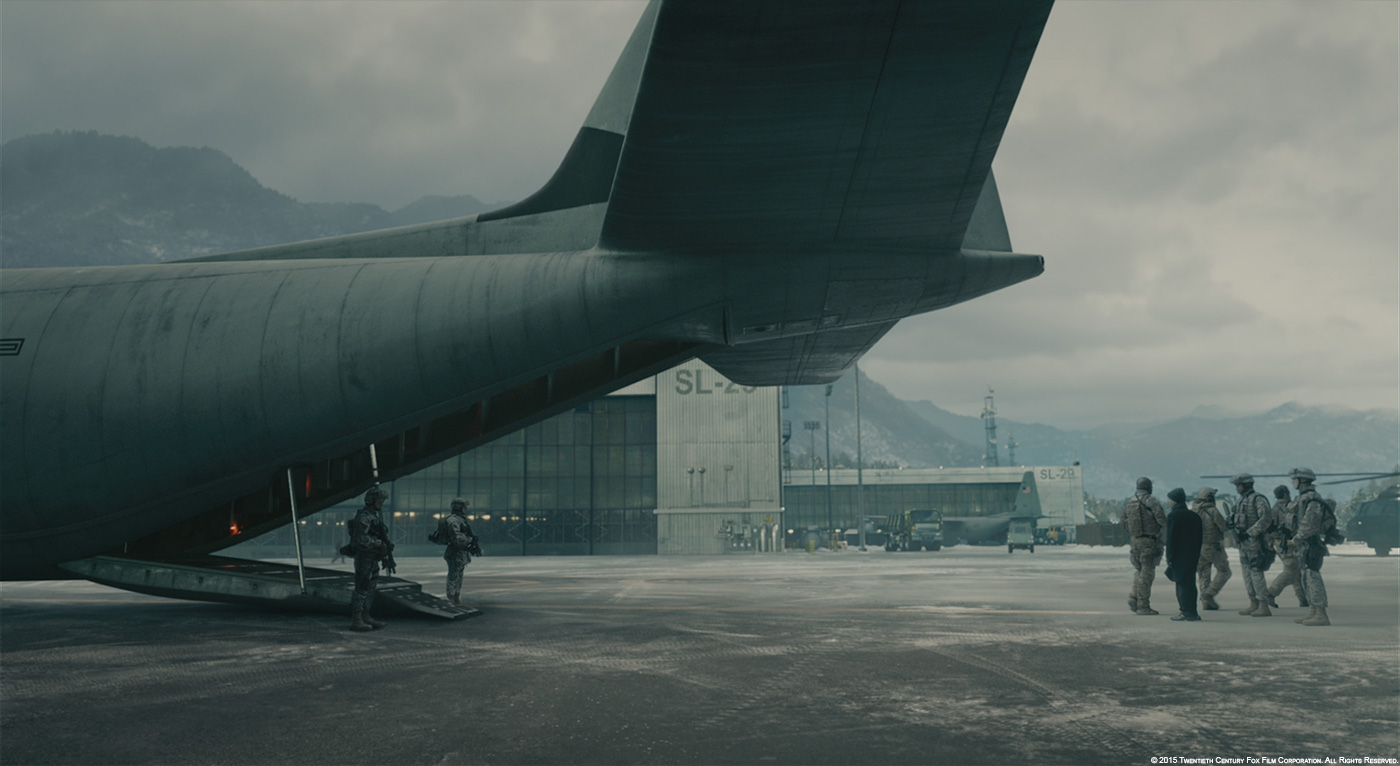During his last appearance on The Art of VFX, Francois Dumoulin had explained in detail the work of Rodeo FX for LUCY. He then worked on CINDERELLA. Today he talks about the reboot of FANTASTIC FOUR.
How did you and Rodeo FX got involved on this show?
We were in contact with Cari Thomas, the VFX producer of the movie, she had seen our work on THE AMAZING SPIDERMAN and appreciated our enthusiasm for this project.
How was the collaboration with director Josh Trank?
We were never in contact with Josh Trank.
How did you work with Production VFX Supervisor James Price?
First of all Jamie came to visit the studio and met with the team, which I found very respectful. From day one he was extremely specific about what he wanted to build, which story point really needed to be conveyed, while remaining open about look development and methodology. Jamie is a natural leader, with strong authority and in-depth knowledge of the field. Yet it always felt like he was our partner, respectful and understanding, helping us delivering great work on schedule. Whatever was happening behind the scene, Jamie never lost his cool and made sure we could focus on what we do best. I’m sincerely thankful for that.
What was the work done by Rodeo FX?
Lots of large scale environment / set extensions, some FX driven scenes with energy fields, some invisible comp work (split performances, continuity fixes), a couple of CG vehicles and props, plus tons of monitor graphics.
Can you describe one of your typical day during the shooting and the post?
We were not involved with the shooting. In post we would usually start the week with an extensive meeting with the departments leads to go over the milestones, and make sure the proper resources were allocated to each tasks. We would then have our daily cineSync with Jamie at noon (9AM for him in LA). In the afternoon we would review artists work in context, making sure everyone was up to date with the latest creative notes. The evening was dedicated to packaging our deliveries, along with submission notes detailing where we stood with each shot and asset, the type of feedback we were requesting and what we planned on doing next.
How did created the energy field created by Reed Richards?
The Quantum FX was a really cool effect to create. We were initially provided with a bunch of references : some spiky fractal shapes, plasma beams and footage of slow-mo underwater explosions (just google that, it’s awesome). We started by doing some concept art in Photoshop. Our art director Olivier Martin painted a few frames showing the evolution of the effect. We presented this to the studio as a sales pitch, and they loved it ! Given the fact that the plates had little to no parallax, we could have considered a mostly 2d solution but decided to try something grounded on a 3d simulation. The effect also had to tie-in with similar shots achieved by Pixomondo and each vendor creative iterations had an impact on the overall design. Using Houdini particle system proved to be a great decision that ultimately gave us more flexibility in the look-dev process.
Production provided us with Trimble scans of the practical Quantum machines from the set, and we modeled and textured the props that would sit on it (a matchbox car and a toy airplane). This allowed us to put some logical constraints to our simulation system and also generate some interactive lighting passes that would help integrate our effect within the live action plates. Our FX artist Dominik Kirouac generated a bunch of different noises and fluids as a complete sequence (from ignition, to the forming of the energy sphere, up to its implosion) and outputted lots of different passes that were rendered through the different cameras of the scene. Those were artistically combined together in Nuke by the amazing Vis Ong, one of our lead compositing artists.
Can you explain in details about the creation of the Baxter building and the New York environment?
The views of New York were very straight forward. Manhattan is a well documented asset at Rodeo, especially after our recent work on BIRDMAN and THE WALK. We relied mostly on 2d matte-paintings, using low-res geometries to get the layout right.
For the Long Island environment, we relied on techniques our CG Sup Mikael Damant-Sirois had previously developed on HEART OF THE SEA to generate large scale digital cities using instanced buildings. In the first weeks of production, our modeling team created individual houses based on photo-surveys and tons of suburbans props to populate the backyards (we referenced our own mailboxes, pet houses and BBQ equipment). Our digital Long Island is featured very prominently in some of the shots, extending some foreground buildings that were partially built on a green screen, and I’m proud to say that our work here will go completely unnoticed.
The Baxter building required more development. We started by looking at references from the comics, and designed a contemporary version of it. We didn’t want to go sci-fi or alien looking. After initial concepts were approved, we created a full CG tower, along with a few surrounding buildings to get the reflections, shadows and everything consistent. Eventually the building was only featured in one shot, but we were prepared to see it from a lot of different angles. Production had shot a plate of Richard and Ben in front of a placeholder building in Baton Rouge. We kept the first two floors, everything above that level is CG.
How did you approach the creation of the screens content?
Well that was a pretty large amount of shots, with lots of different contents and UI, so we had to build a motion graphics department around the project. We started off just me and Jocelyn Tremblay, from our advertising department. I interviewed a couple of artists before hiring Zack Lovatt, on Jocelyn’s recommendation. It was a two men army and they delivered beyond expectations!
Can you explain in details about their creation and especially their animation?
First I gathered some references from other movies or designers that I like, then Zack and Jocelyn started putting together some mood boards for each scenes. We wanted to translate each character and environment unique personality through the design of the interfaces.
We ran those mood boards and concepts through the chain of approval and started generating some generic animation loops for each screens. Most of it was achieved within After Effect, with some procedural animations and wireframe renders done in Cinema 4d. Rodeo team members can be seen in the surveillance videos and facial scanner interfaces. The whole motion graphics project was treated internally almost as a separate show until we were ready to integrate the graphics into the plates.
What references and indications did you received for Area 57?
We received some very elementary sketches of the buildings, provided by the Art Department.
Can you explain in details about its creation?
At first we were only tasked with the creation of a wide establishing shot at night, featured in the early trailers. Later on, we had to design the complete layout of the place, including the set dressing and the surrounding landscape. We referenced real life military bases, like the Eielson Air Force base in Alaska and produced a couple of concept arts for the studio. It was a rather unusual process, since we had almost completed our asset before any location plate was shot! Jamie then used our layout to scout a fitting location in British Columbia, where he eventually shot some aerial plates to integrate around our military base.
What was the real size of the Area 57 sets?
I’d say around 50 / 50 feet of white concrete floor surrounded by green screen, and a separate set piece for the ventilation shaft that Reed uses to escape.
How did you populate the place with people and vehicles?
Background moving vehicles are CG builds, with very basic shading. Soldiers walking in the distance were taken from our own library of green screen sprites.
Can you tell us more about the inside view of Central City?
This one came very late in the game so we had to move fast. Jamie provided us with some examples of the technology that would be featured in this environment. While doing initial concept art to determine the general proportions, we started modeling individual objects based on Jamie’s references. By the time the concept was approved, we were ready to populate it with CG props. The main issue we add to face in the last days of production was the excruciating rendering time of the shots : bouncing sunlight into a huge interior made entirely of glossy thin reflective objects provided a good challenge for our render engine.
How did you collaborated with the other vendors?
By encouraging frequent and direct communication between vendors! We usually tend to consider that the vendor doing character / creature work should do the final comp, but more than often schedule constraints get in the way. Thanks to industry standard formats like Fbx and Alembic, it has become much easier for facilities around the world to exchange everything from camera tracking data to simulation caches. Sharing « mini-comps » also tends to become a standard nowadays, for stereo post-conversation initially. It pushed us into streamlining our Nuke compositing scripts as deliverable on its own. But I can’t stress how important honest and open communication is.
What was the main challenge and how did you achieve it?
Every show is different and you always want to challenge yourself, and improve your pipeline and tools. On this one, we mostly tried to follow a granular approach: having many small and distinct parts evolving in parallel, and being able to replace or modify individual parts without affecting the whole. It was exhausting sometimes, because you can’t get closure on a specific step until the whole thing is completed. It’s not your usual linear pipeline, and it can be pretty stressful from a manager’s point of view, but in the end it allowed for a large amount of shots to be delivered by a small amount of people on a short amount of time.
Was there a shot or a sequence that prevented you from sleep?
Not really. Besides the motion graphics, the bulk of the work was right down our alley.?Of course there were moments of fatigue due to the stressful delivery schedule, but everything went great thanks to a fantastic team !
What do you keep from this experience?
It is becoming increasingly difficult to deliver high quality work within ever shrinking schedules, knowing that major creative changes can and will happen at every step of the process, and that, as a result, the logical solution would be to grow your crew larger and larger to accommodate for such situations. To me this just doesn’t feel like the proper creative answer so I had to work my way around it. This experience was not just a stress test for our artists and pipeline, it was a great opportunity to reflect on how we book of our resources, within a company that is expanding at an impressive rate. I learned a lot on how to best deploy key individual talents, and empower them with more creative responsibilities, on a broader scale. Hats off in particular to Matthieu Chattelier, compositing supervisor extraordinaire, and Manuel Gaudreau, tireless layout maestro. They were instrumental in keeping all the pieces together.
How long have you worked on this show?
We started concept and assets back in August 2014, so on the paper it’s been a year.
How many shots have you done?
We worked on around 250 shots, out of which 175 made the final cut.
What was the size of your team?
Around 50 persons, artists, support and production.
What is your next project?
I’m currently wrapping TARZAN, our first major creature show. A great experience that I can’t wait to share. We are all extremely proud of what we achieved. And after a short break, I’ll be jumping on a crazy amazing gigantic project, that unfortunately I can’t disclose at the moment !
A big thanks for your time.
// WANT TO KNOW MORE?
– Rodeo FX: Dedicated page about FANTASTIC FOUR on Rodeo FX website.
© Vincent Frei – The Art of VFX – 2015

